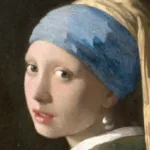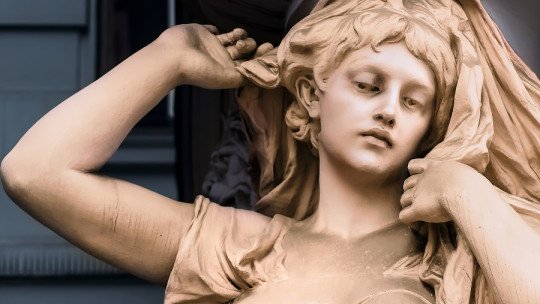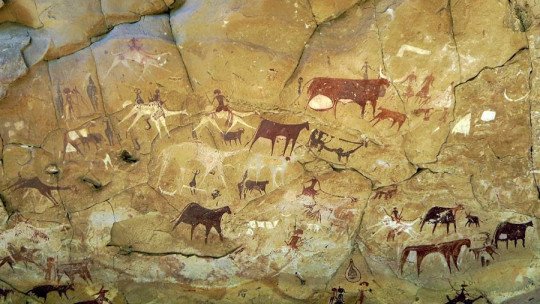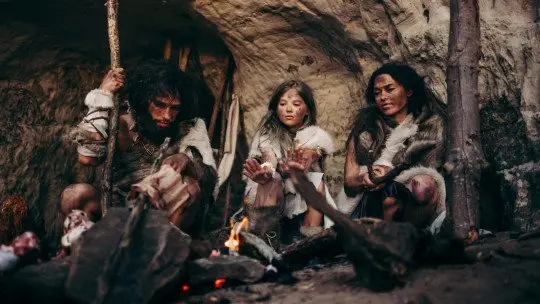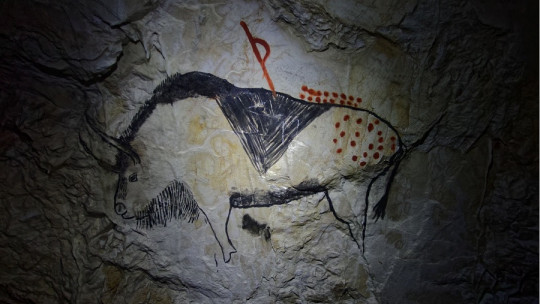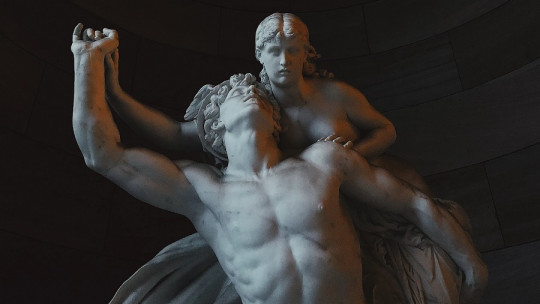Do you know what cave painting is? These are different creations typical of the prehistoric era, located practically anywhere in the world (especially Africa, South America and some countries in Europe).
These paintings mainly represented hunting scenes, animals, symbols… But how were they created? What meaning did they have, and with what colors and materials were they made? In this article we will answer these questions and many more (with interesting facts).
What is cave painting?
What is a cave painting? Is about a very old pictorial work, a kind of drawing, sketch or painting, that we find in some rocks or caves , especially from prehistoric times. Cave paintings are an essentially prehistoric artistic expression and manifestation (although they go beyond a specific era or period), full of history and culture.
Specifically, the term “rock” derives from the Latin “rupestris” (this, in turn, derives from “rupes”, which means “rock”). So, technically, when we talk about “rock” we are referring to a type of human activity carried out on the walls of caves, rocks, ravines, etc
Thanks to the fact that rock painting is usually protected from erosion and weather conditions (due to its location), it has endured over the centuries.
Thus, cave painting is actually a very ancient artistic manifestation (even the oldest). In fact, There are testimonies of them that date back to more than 40,000 years ago (time of the last ice age).
However, some research (such as one carried out by the University of the Witwatersrand in South Africa) reveals that paintings could exist further back in time, thanks to the fact that in 2018 they found a stone with a cave painting (Paleolithic drawings) from more than 40,000 years; Specifically, it is estimated that this cave painting was recorded more than 73,000 years ago.
Fun facts
Cave painting has many years of history. Although it is more typical of prehistory, this type of painting can be found in all periods of human history.
As a curious fact: where do we find cave paintings? Well on all continents except one: Antarctica
And where are the oldest and most famous cave paintings located? In two countries: Spain and France. Specifically, we find many of them in the period of transition, from the Paleolithic to the Neolithic.
Which Spanish cave painting corresponding to the Paleolithic era is one of the most famous? One of the most relevant is the painting located in the Altamira Cave, which is located in Santillana del Mar (Cantabria, Spain).
Another curious fact about the cave paintings is that today it is known that the vast majority of them were made by women (around 75% of them, although in reality, the different human groups that hunted and gathered fruits, made this type of paintings, including men.
The value of painting: meanings
Both cave painting and other artistic manifestations have the same function: represent art, express and organize a system of artistic representation Furthermore, cave painting is related (especially its origin) to practices of a religious, mystical and magical nature, which had the objective of promoting hunting. These paintings have also been related to places of sanctuary and prayer.
Where to find these forms of prehistoric art?
Mainly, rock painting appears in caves, although it can be found in other structures. These types of paintings have been located in remote and isolated areas of the caves (really inaccessible places), but also in more visible areas, in clear areas, etc. However, as a general rule, These types of paintings were located inside the grounds and caves, in areas where the darkness was complete or practically complete.
Apparently, the artists of such creations used small stone lamps to create their artistic drawings, which were nourished by marrow (the marrow they used was the marrow of an animal’s bones).
Themes
What was drawn and what was symbolized by the cave paintings? Different themes. Thus, we find cave paintings of different types: in them we can see animals, lines, symbols, human beings, hands, elements of the environment, nature, etc.
Paleolithic and Neolithic
If we divide history into the Paleolithic and Neolithic times, we find that in the first period (Paleolithic) the cave painting symbolized above all animals and lines. In the second period, however, animals, the environment, hands and human beings mainly appear (that is, this type of painting acquires a certain complexity).
In the Neolithic, the habitual behavior of communities was represented above all through cave painting. The interaction of these groups with the creatures and living beings in the environment was also reflected. In this specific period, cave painting is based on figures (animals) such as: horses, reindeer, deer, mammoths, bison… It is also common to find wounded animals, especially with arrows.
Materials and colors
Regarding the materials used to create this type of paintings, today we know that They were made with different paints, very similar to each other in different historical periods (and in different areas of the world).
On the other hand, what (and how many) colors were used to create the cave paintings? Generally, for each cave painting, only one or two colors were used. The most used were black, ocher, yellow and red
Other types of colors, those of vegetable origin (called pigment colors), were also used, and were made from fluids, charcoal, mineral compounds (clay, hematite, manganese oxide, resin, fat…) and body waste (feces).
How did they paint and create?
The creators of cave painting used the colors described above, smearing their fingers with them, and with the different materials available. Other options they had were to spit the paint on the rocks, or use a hollow reed (blowing thin lines of paint to make the rock painting).
On the other hand, It could be that they rubbed the powdered pigments of the colors on the wall, directly They may or may not mix these pigments with another substance (for example, a binder), and use canes, rudimentary brushes or other tools.
They also sometimes used pencils To do this, they took burned branches and balls of mineral dye, which they bound with another substance: resin. To give a sensation of volume and realism in their creations, they sometimes chose to take advantage of the unevenness of the wall, as well as its irregularities and crevices.
For example, in paintings with animals, artists scraped (that is, marked) their silhouettes to create incisions, thus producing a perhaps more realistic and noticeable outline in the rock.




